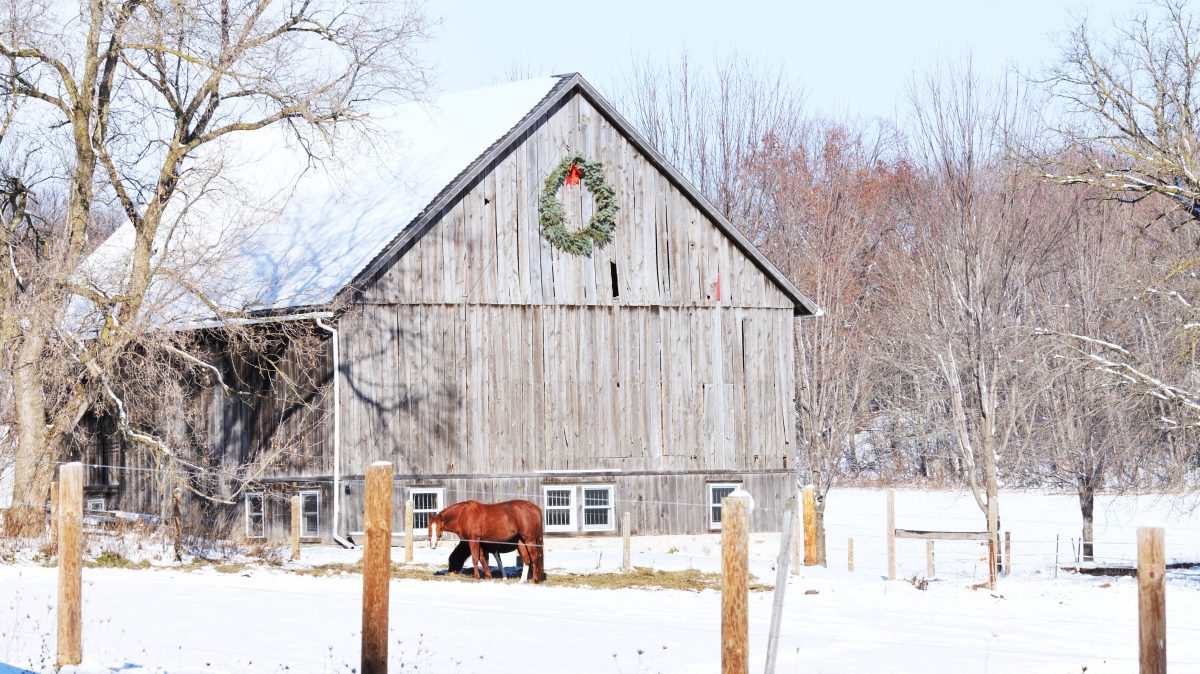Winter Storm Warnings on the Farm
TOPICS
PorkGuest Author
Special Contributor to FB.org

photo credit: Getty
Guest Author
Special Contributor to FB.org
By Heather Lang @crazypiglady5
“Winter Storm Warning. Accumulating snowfalls up to 3 ft. expected with wind gusts up to 55 mph making it hard to stay on roadways. Pack extra water, a candle & clothes in your vehicle.” These were the headlines on Oct. 9 in North Dakota.
Although we live in what many consider the Arctic, we typically don’t have bad weather warnings until December or possibly late November. This year the weather has thrown challenge after challenge at us. So far, we have come out with our heads barely above water.
The early October storm could change things for a lot of area farmers and ranchers, leading some to call it quits.
The early October storm could change things for a lot of area farmers and ranchers, leading some to call it quits. This storm follows a summer where we never saw a 100-degree day and had just a couple of 90-degree days. The constant rain was another problem, as we were not able to get into the field on time to plant crops.
I saw a post on Facebook that read, “I’m glad it only rained for 2 days this summer. Once for 45 days and the other for 32 days.” As much as I want to chuckle about this, I want to cry even more. The Alfalfa hay crop looked great this year with some fields even yielding a third cutting, however, due to the continued rain there are numerous ruined bales out in the drenched fields. There are acres of crops still standing out in the field that can’t be harvested because they haven’t dried out enough.
My husband and I have a small pig farm and specialize in growing crops such as flax, oats and barley. Our pig farm is farrow-to-finish or “birth-to-bacon,” as we like to call it.
We feed a well-balanced diet to our pigs consisting of corn and soybean meal as the main ingredients with some additional supplements such as dried whey for protein and sugar, and limestone or phosphate for calcium. The pigs’ health is monitored on a regular basis not only by us, the farmers, but also by a veterinarian. Clean water and shelter are also essential.
Years ago, it was believed that a fat pig was a “happy pig.” Although the occasional snack of what used to be referred to as “slop” (kitchen leftovers) can be fed to pigs, today we know that a pig should be lean and long, rather than fat. This provides consumers with healthy, lean meat.
Our barn houses the sows that are about to give birth (farrow) or have recently farrowed along with the newly weaned piglets. With wintertime approaching very quickly in North Dakota, there are numerous tasks that need to be completed.
During the colder months we provide straw for extra warm bedding and haul buckets of water to each pen because we’re not able to run the hose. We also make sure plenty of feed is ground up in advance, since the pigs will be eating more during the colder months. We also stock up on heat lamps and extra bulbs. Chores need to be done twice a day and during snowstorms, three times a day, while continuing to watch the pigs throughout the day.
We raise heritage breed pigs because they can withstand cooler temperatures better and adapt to fluctuating temperatures, plus they tend to have exceptional mothering abilities.
Even with all the challenges we’re facing, there is still no place else we would rather be. There is nothing else we could see ourselves doing. We pride ourselves in supplying healthy, affordable food for all to enjoy.
Heather Lang, a farmer and Farm Bureau member in North Dakota, serves on the American Farm Bureau Federation’s Promotion & Education Committee. Watch a video about how Lang and her family prepared for the October storm here: https://ndfb.org/on-your-table/on-your-table-blog/preparing-for-a-blizzard-farmer-style/.
Trending Topics
VIEW ALL